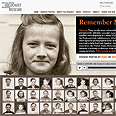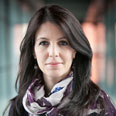The United States Holocaust Memorial Museum is using technology in a race against time, with the aim of identifying and locating 1,100 orphaned babies and children and others separated from their families during the Holocaust.
- For further information and the full list of displaced children, visit the "Remember Me?" website at http://rememberme.ushmm.org/
"Remember Me?" is a campaign aimed at locating the people in the pictures. Since it was launched in March, 230 of the babies and children have been found – 15 of them in Israel.
CBS report on 'Remember Me?' project
Dr. Lisa Yavnai, the Holocaust Memorial Museum's marketing campaigns manager and until recently the director of the Museum's Survivors and Victims Resource Center, believes that people reading this article on Ynet will be able to dramatically help solve the mystery – where have so many people disappeared to?
1,000 appeals a month
"Every month we receive more than 1,000 appeals from people from 70 countries. These people have been looking for more than 60 years for information on their displaced loved ones and still have no answers," says the Israeli-born Yavnai.
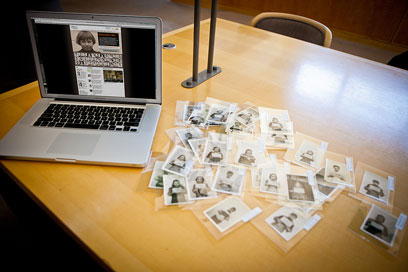
Where did so many people disappear to? (Photo: United States Holocaust Memorial Museum)
"One of our tasks is to record what happened to the victims for the future, as part of the Museum's historical documentation," explains Dr. Yavnai.
This is how the Museum was exposed to "a collection of photos of children we knew almost nothing about, apart from the fact that they were rescued after the war. We knew some of their names, ages and the countries they came from. We felt we were in a race against time to reach them."
'Youngest victims of the Holocaust'
Yavnai explains that "these people are today between the end of their 60s and their early 80s. These are the younger victims of the Holocaust.
"In March we began a campaign to locate the survivors in order to interview them and record their stories, but as important – to connect them to other survivors and people who helped care for them during and after the war."

Connecting people to other Shoah survivors. Lisa Yavnai (Photo: United States Holocaust Memorial Museum)
The Holocaust Museum's campaign has been published in Jewish media in the US and France. At the same time, the Museum has launched a campaign on Facebook and Twitter, seeking the public's help in locating and identifying the 1,100 children in the photos.
'C'est moi'
From the moment the campaign was launched, the "babies" began popping up.
"We began the campaign on March 21. Twenty-four hours later we were contacted by a first 'baby' from Paris, who said: 'C'est moi' ('it's me').
"Who would have thought that at this age you could find people on Facebook and Twitter? We expected younger family members from the community to help, but it turns out that the grownups themselves are on the Net," Dr. Yavnai notes.
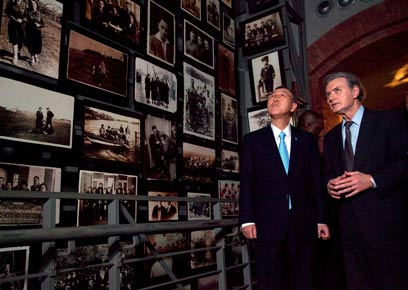
'A 'baby' from Paris contacted us.' Holocaust Museum in Washington (Photo: AP)
The radio days
Since 1945, efforts have been made around the world to locate missing people through one of the most accessible tools at the time – the radio.
The British Broadcasting Corporation (BBC) did it immediately after World War II. At the same time, the Jewish Agency began operating the Search Bureau for Missing Relatives, which was set up to help Holocaust survivors locate relatives and acquaintances lost during the war.
The Search Bureau for Missing Relatives concluded its activity in 2002, and five years later Israel Radio re-launched a program by the same name. Listeners call in to locate people missing since the Holocaust and renew their ties with distant relatives.
In the days after World War II, there were no emails and no social networks, not to mention the Internet. Even those who managed to get any interesting information from the radio got stuck in a frustrating bureaucratic process, which included a lengthy correspondence with the interior ministry and authorities.
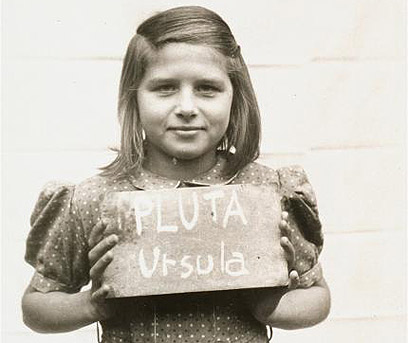
Do you know her? (Photo: Gift of Robert Marx, Yaffa Eliach Collection, Center for Holocaust Studies, Museum of Jewish Heritage, NY)
But today we have a quick and immediate social took, which can be used not just for uprisings in the Arab world.
Israeli public's help needed
"Anyone visiting our website can leave us a message if they identify one of the children in the pictures. There is great potential to locate the survivors, and we need the help of the Israeli public to share this on Facebook with anyone they know. We want as many people as possible to be involved in the search," says Dr. Yavnai.
"Even if you don't know anyone, take a few minutes, look at these children and what they went through until they were rescued. This way, we hope to raise awareness to what children go through during war.
"When someone tells us they recognized a relative, we contact and interview them. If someone has already died, we interview his or her family members about the story of their life."
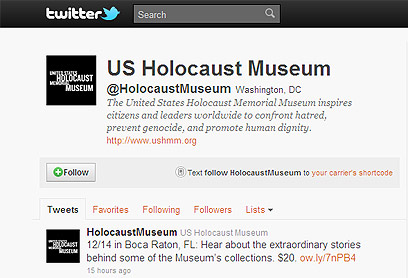
Using Web to search for missing people. Holocaust Museum's Twitter page
The US Holocaust Memorial Museum, which focuses on the documentation and historical records of the Nazi victims' stories, suddenly found itself engaging in the location of living people.
"Most of them were children who lost their families. They don't remember who saved them and who took care of them. There is a black hole in their lives. Through the project they discover details they never knew.
"One of the survivors said it was the first time he saw a picture of himself as a child. Another discovered the woman who took care of him in the orphanage in Europe and the toys he enjoyed playing with. For these people it makes all the difference."
Act fast – for next generations
Asked why only 15 of the pictured children have been discovered in Israel so far, the project's manager Jude Richter responds: "It was widely publicized in the US. We assume that there are many survivors from Israel, but so far there have been no reports on the project in Israel.
"A French Holocaust survivor went over telephone directories and managed to locate 70 relatives in France. Two of our employees are fluent in French and helped us with this issue.
"So far we have located people behind the photos in the US, Canada, Israel, Britain, France, Hungary, Australia and Switzerland," he says.
Richter stresses the project's urgency. "These are the youngest survivors, and they are dying. In September we saw Hans Neumann of Berlin, who was in London at the end of the war, and a month later we posted his story on the Holocaust Museum website. His daughter, Linda Fischer, wrote to us that he had died in August 22.
"It's important to act fast. We would love to receive responses from Israelis. If you recognize anyone, help us reach them or publish their story. Most of the survivors we managed to locate in Israel are French Jews through the 'Alumim' association."
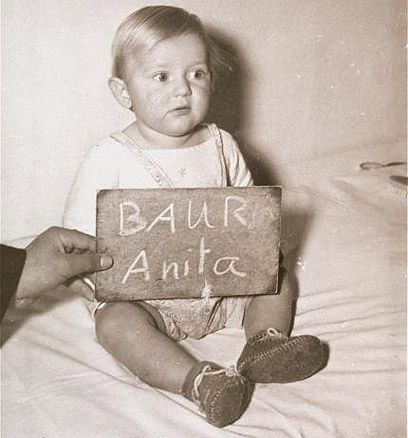
Where is Anita Baur? (Photo: Gift of Robert Marx, Yaffa Eliach Collection, Center for Holocaust Studies, Museum of Jewish Heritage, NY)
"Michlean Amir conducts the interview with the Israeli survivors. She explains that the location of displaced children succeeded among French Jews due to the fact that the Alumim association worked to locate children hidden in France.
"Several times a year she releases a booklet on the issue in which she mentions out project, and that's how people reached us. We have located 15 survivors in Israel, 13 of them alive.
"One of the survivors who moved to Canada has died, but we received the information on him from his brother who lives in Israel. We had only once case in which a person was reluctant to cooperate."
In case you were wondering, the babies in the pictures were not sent to the Nazi concentration camps and therefore "slipped away". They were the youngest and their voice was barely heard. The ones who arrived in Israel were absorbed in kibbutzim and children's residences.
The United States Holocaust Memorial Museum is seeking the Israeli public's help in identifying the people behind the pictures.
